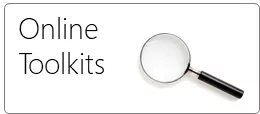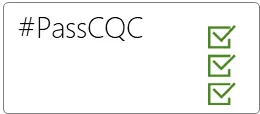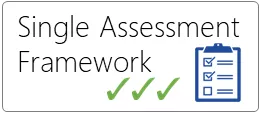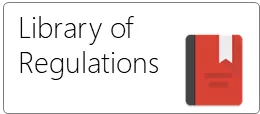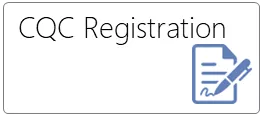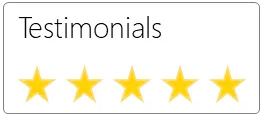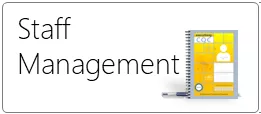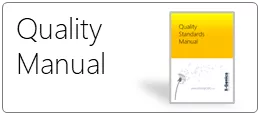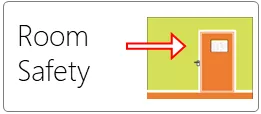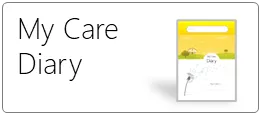Update your evidence
Make sure all your evidence and logs are up to date. If you are short of time, make sure at least the following are updated and create a quick schedule of when you plan to review the rest, even if this is after the inspection, to demonstrate it's under control.
- Infection control checks
- Complaints logs
- Incident logs
- Safeguarding events log
- Fire alarm checks
- Recruitment and DBS checks
Overlooked problems
It is easy to become used to things that are not quite right.
This is not dissimilar to moving into a new house and thinking that the first thing you will change are the bright purple carpets. Two weeks later you think that you will concentrate on doing the walls and change the carpets later. Six months down the line, other things have taken priorities and you almost don't notice the bright purple carpets anymore, till someone visits and points them out to you.
Always carry out a walk-through of the premises with a fresh pair of eyes, perhaps get independent persons to do this objectively
Disruptive Staff
If you have a difficult staff member, especially with grievances, give them the day off
- Tell Inspector up front, better still have a pre-prepared note explaining why you have done this
- Give inspector contact details (ensure you have permission) if the Inspector wants to interview them
- Make full disclosure of what you have done and why
Why do this
- You have control of the narrative
- You will demonstrate that you are aware of the problem
- You ensure that the 99% GOOD is not tainted by the 1% bad
- You declared it up front so the CQC have to include this in their report
- If they don't give you credit, you can challenge on factual inaccuracy and get the report amended
If you don't take these steps, then the CQC will hear from staff first, and if it goes into the report, you have no other grounds to mitigate or challenge factual accuracy of the findings
Disruptive staff and grievances are part of life, there is no need to hide it, but you can show you are trying to manage it responsibly. Some staff can be hard to manage and employment laws favour employees, the Inspector will understand this
Misuse of Medical Fridges
Poor practices to avoid
- Staff storing their sandwiches and other edibles in the medicine fridges
- Dirty and stained insides of fridge
- Fridge temperature logs not being maintained
Staff Briefing
A staff briefing will help calm nerves and instill confidence. Use it to boost morale and remind them of positive achievements.
Remind people about basics such as:-
- Signing in procedures
- Infection control
- Hand Hygiene
- Safeguarding
- Confidentiality and IG Governance
Brief key staff
- Inform the key members of your team about the inspection.
- Keep a good perspective and don't panic staff
- Have a quick staff meeting to assure staff that everything is under control. Answer questions if they are worried
- Let them be themselves without fear of saying or doing the wrong thing on the day
- Make sure all key staff are avalable on the day, and you are not short-staffed on the day
Notice Boards
Public Notice Board
Purge the notice public boards of all old and dog eared notices and replace with current information. Remember, one out of date poster undermines the relevancy of all other information
Staff Notice Boards
This indicates how well informed your staff are. e.g. a work place risk assessment pinned to the notice board gives assurance that not only have you conducted the Risk assessment but have ensured that staff are aware of the risks.
Things that you may consider displaying are
• Statutory notices (required by law)
• Current employers liability insurance
• Workplace Risk Assessment
• Health & Safety Law Poster
• Safe Working Practices poster
• Manual Handling techniques poster
• Fire extinguishers – what the different types are for and how to use them
• Health and Safety Policy
Medicines Management
- Check your security of storage is up to scratch
- Ensure that your fridge monitoring temperature logs are available
- Discard any out of date medicines
- Ensure that there are no medicines 'lying' around in office or clinical areas
- Ensure there are no medicines lying around in public areas
Deep Clean your premises
A CQC visit is about putting your best foot forward.
- If you need to, get a professional cleaning service to deep clean
- Get specialists if you are in a clinical environment
- Spring clean your premises, first impressions matter
- Infection control walks hand in hand with cleaning
- Ask your infection control lead to carry out a quick infection control audit so that nothing is missed
Questions CQC Inspectors ask your staff
Some of the most common questions CQC inspectors ask your staff.
| Can your staff answer these? Print this out and use as your checklist | ||||
| 1.1 | How long have you been working here? | |||
| 1.2 | How did you apply for the job? | |||
| 1.3 | What it is that you do at the practice? | |||
| 1.4 | Do you have a job description/ clear role responsibility? | |||
| 1.5 | Do you have a contract? | |||
| 1.6 | Were you given a staff handbook when you joined or since? | |||
| 1.7 | Do you know where to locate the staff handbook? | |||
| 1.8 | Name one good thing you like about your work? | |||
| 1.9 | Do you have any concerns? | |||
| 1.10 | Do you feel supported? | |||
| 2.1 | How are you treated by the management and Partnership? | |||
| 2.2 | Did you have an interview when you applied for the job? | |||
| 2.3 | Were references taken when you were appointed? | |||
| 2.4 | Did you have a CRB/DBS check for the current position? | |||
| 2.5 | Do you have staff appraisal? | |||
| 2.6 | When was your last appraisal? | |||
| 2.7 | How did you follow up to the objectives & action plan set out in your appraisal? | |||
| 3.1 | Do you have regular meetings as a practice or individual? | |||
| 3.2 | Are you included in adding to the agenda? | |||
| 3.3 | Do you receive meeting minutes? | |||
| 3.4 | How are action points arising from the meetings followed up? | |||
| 4.1 | Do you know about vulnerable adults and children? | |||
| 4.2 | Who is the safeguarding lead at the practice? | |||
| 4.3 | What are the practices' out of hours' arrangements? | |||
| 4.4 | Are you aware of a whistle blowing policy? | |||
| 4.5 | Do you feel free to blow the whistle if and when necessary? | |||
| 4.6 | Do you know about the complaints procedure and can you describe it? | |||
| 4.7 | How do you react when you read NHS choices, if there is a complaint? | |||
| 4.8 | Have you received training? | |||
| 4.9 | What courses have you been on? | |||
Monitoring
- You don't hold regular meetings
- You hold meetings, but don't keep record of staff meetings
- You don't keep a record of Clinical or Care Planning meetings
- You cannot produce evidence of regular monitoring of standards
- You do not have a central collection of issues discovered
- You do not have up to date logs of Complaints, Significant Event Audits, Incidents, Meetings etc.
Continuous Compliance
- You only look at compliance once a year to meet deadlines
- You only prepare evidence when a CQC visit is announced
- You don't have regular safety checks
- Your main focus is having all the policies and not daily monitoring
- You will get around to Governance matters soon
Time and cost to prepare for an inspection
Continuous compliance automatically makes you inspection-ready anytime.
A longer preparation time may indicate poor compliance.
| Level of preparedness | External consultancy | Staff time | Preparing evidence | Stress Level |
|---|---|---|---|---|
| Totally unprepared | Up to 10,000+ | 20 hours | 30 hours | ***** |
| Reasonably well prepared | Up to £5,000 | 15 hours | 20 hours | **** |
| Mostly prepared | Up to £2,500 | 10 Hours | 15 hours | **** |
| Fully prepared | None | None | 10 hours | *** |
| everythingCQC system | None | None | 1-2 hours | ** |
Recording evidence
Evidence
- You have the paperwork but haven't summarised results
- You depend on staff having read and understood policies
- You have done the work but can't prove it on paper
- Staff just click through online training to get it out of the way
Evidence
- You have the paperwork but haven't summarised results
- You depend on staff having read and understood policies
- You have done the work but can't prove it on paper
- Staff just click through online training to get it out of the way
Current Rating: Good or Outstanding
| Good or Outstanding | Maximum Intervals |
|---|---|
| CQC inspection | Five Years |
| Provider Information Collection | Yearly |
| Regulatory Review | Yearly |
| Interim Inspections | May be triggered based on information/concerns |
| Other requests for information | CQC relationship manager(s) may request further information if there are changes in the quality of care |
Current Rating: Requires Improvement
| Rated as Requires Improvement | Maximum Intervals |
|---|---|
| CQC Inspection | 12 months |
| Provider information request | Before an inspection |
| Requests for other information | Relationship managers/Inspectors may request further information if there are changes in the quality of care |
Current Rating: Inadequate
| Rated as Inadequate | Maximum Interval |
|---|---|
| CQC Inspection | 6 months (may be more frequent) |
| Provider information request | Before an inspection |
| Requests for other information | Relationship managers/Inspectors may request further information if there are changes in the quality of care |
Who to expect
Annual Review
- Usually handled by your local Inspector
- Additional inspector may review or make calls to Service Users
On-Site Visit
- The lead CQC inspector
- The team can vary in size, to reflect the size of the organisation
- May also include Experts by Experience
GPs and Clinics
GPs and Clinics can expect additional specialists to assist the lead inspector such as:-
- A practicing GP
- Practice nurse
- Practice Managers
A named lead inspector is assigned for each CCG area in a bid to promote an ongoing relationships between practices and inspectors. This also means that the local lead will have a better handle on good Vs bad performers and target accordingly
Why they ask for your Statement of Purpose
What the CQC ask for Vs what they actually mean
The CQC have already got your Statement of Purpose, so why ask for it again?
The main reason is that you should have kept it up to date and told them of changes. What they are really asking for is your up to date statement.
Your Statement of Purpose is more than just a description of what you do, it is a formal record of your registration. It is a legal declaration of your place of business; who owns it; and the services your licence will provide.
Changes to the statement are a serious matter. Do not start revising your statement for the sake of making it "look better" as any changes you make are notifiable to CQC. If you do this and forget or fail to notify the CQC at the same time, you will have shot yourself in the foot because this can now be picked up as a breach of regulations.
Statements of purpose must be amended when there are changes to the items as listed in Schedule 3 of the Care Quality Commission (Registration) Regulations 2009.
- You have to notify CQC whenever you change your statement of purpose detailing the changes.
- You have to do this within 28 days of making any changes.
SCHEDULE 3 INFORMATION TO BE INCLUDED IN THE STATEMENT OF PURPOSE
- The aims and objectives of the service provider in carrying on the regulated activity.
- The kinds of services provided for the purposes of the carrying on of the regulated activity and the range of service users' needs which those services are intended to meet.
- The full name of the service provider and of any registered manager, together with their business address, telephone number and, where available, electronic mail addresses.
- The legal status of the service provider.
- Details of the locations at which the services provided for the purposes of the regulated activity are carried on.
Legal Responsibility to Notify Changes
Statements of purpose must be amended when there are changes to the items as listed in Schedule 3 of the Care Quality Commission (Registration) Regulations 2009.
- You have to notify CQC whenever you change your statement of purpose detailing the changes.
- You have to do this within 28 days of making any changes.
SCHEDULE 3 INFORMATION TO BE INCLUDED IN THE STATEMENT OF PURPOSE
- The aims and objectives of the service provider in carrying on the regulated activity.
- The kinds of services provided for the purposes of the carrying on of the regulated activity and the range of service users' needs which those services are intended to meet.
- The full name of the service provider and of any registered manager, together with their business address, telephone number and, where available, electronic mail addresses.
- The legal status of the service provider.
- Details of the locations at which the services provided for the purposes of the regulated activity are carried on.
Check your Statement of Purpose
The Statement of Purpose comes in 4 parts
You must keep your statement of purpose up-to-date and notify any changes.
| Part 1 – Basic details |
|
| Part 2 – Aims and objectives |
|
| Part 3 – Locations |
|
| Part 4 – Registered Manager details |
|

